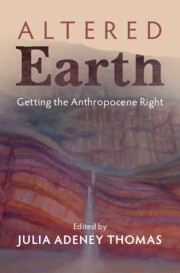Book contents
- Altered Earth
- Altered Earth
- Copyright page
- Dedication
- Contents
- Figures
- Foreword
- Acknowledgments
- Introduction: The Growing Anthropocene Consensus
- Part One Strata and Stories
- Part Two One Anthropocene; Many Stories
- Part Three Future Habitations
- Chapter 11 Anthropocene Ethics, as Seen From a Mars Mission: A Story
- Chapter 12 Mutualistic Cities of the Near Future
- Afterword
- Biographies of Chapter Contributors
- Index
- References
Chapter 11 - Anthropocene Ethics, as Seen From a Mars Mission: A Story
from Part Three - Future Habitations
Published online by Cambridge University Press: 24 March 2022
- Altered Earth
- Altered Earth
- Copyright page
- Dedication
- Contents
- Figures
- Foreword
- Acknowledgments
- Introduction: The Growing Anthropocene Consensus
- Part One Strata and Stories
- Part Two One Anthropocene; Many Stories
- Part Three Future Habitations
- Chapter 11 Anthropocene Ethics, as Seen From a Mars Mission: A Story
- Chapter 12 Mutualistic Cities of the Near Future
- Afterword
- Biographies of Chapter Contributors
- Index
- References
Summary
Rich men in spaceships have become a meme. For some, they symbolise technological mastery and the will to exploration; for others, they represent the kind of hubris and indifference to nature that have brought us to a futural crisis. The Anthropocene’s arrival is intensifying the ethical chasm between two incompatible ways of seeing the Earth and the place of humans on it. With climatic tipping points approaching, the possibility that the Earth will become uninhabitable for humans within the next century or so is stimulating some thinkers to consider what it would mean for humans (at least, a few of them) to settle elsewhere in the universe, leaving the Earth in ruins. It may be the most profound decision humans (at least, a few of them) will ever make—civilizational phoenix or cosmic grave.
- Type
- Chapter
- Information
- Altered EarthGetting the Anthropocene Right, pp. 223 - 231Publisher: Cambridge University PressPrint publication year: 2022

